
Historical / Inshore / Saturation Diving
‘Nec aspera terrent’ – adversities do not frighten. This quotation from the flag of the Hannover Army 1617 – 1866 was Sten Morten Fonnes (RIP) motto. Another he regularly quoted was, ‘I have no fear of the deep dark unknown depths.’ Although sadly, I believe he suffered from other personal demons.
My father taught me how to swim at the tender age of three, and forever after I thrived in water. Swimming daily in Zambia and later in schools swimming pools in Norway, swimming a personal best of seventy-seven meters underwater on one breath in a twenty-five-metre swimming pool. I set my school’s fifty and one-hundred-metre crawl records in the same pool. Subsequently, I falsified the birthdate in my passport at the age of 14, enabling me to enrol in a sports diving course on Sotra. As a young man, I completed the Minedykker (Norwegian Naval EOD Commando) selection and course in 1987. After leaving the Navy, I acquired all four Norwegian civilian employment diving certificates before the end of 1992 (I never obtained a PADI certificate).
- A) Offshore Surface Orientated Diving Certificate no A-245 dated 01/04-1989.


- B) Saturation Bell Diving Certificate no 2172 dated 01/05-1991.


- C) Inshore PART I Diving Certificate no 0183 dated 09/08-1991.


- D) Advanced Underwater Work CLASS III (Standard Helmet) Diving Certificate no 0153 dated 01/05-1992.


From March 1989 to June 1991, I took inshore diving work along the western coast of Norway for small diving companies using Narghile and Scuba equipment, including ODO2 surface decompressions (Standard Hard Hat-After 12/1992).
Arbeidsdykk AS: A total of 155 vessel days onboard M/S Norlindo.
Amundsen diving AS: A total of 245 vessel days onboard M/S Scuba and M/S Scuba Junior.
IMC Diving AS & Tore Olsen diving AS: A total of 62 vessel day’s onboard small inshore vessels.
A combined total of 462 ship days logged between Arbeidsdykk AS, Amundsen diving AS, IMC Diving AS & Tore Olsen diving AS.
In June of 1991, I was blessed to be offered work by Stolt Nielsen Seaways. Offshore in the North Sea aboard the DSV Seaway Harrier, initially on Ekofisk field air diving, then as a deck foreman. This was followed by a short eight-day saturation dive on the Cod and Teesside pipeline, UK sector. I continued saturation diving until July 2001. See the list of vessels below, averaging about 100 days of saturation each year. I was transferred permanently to the subsea construction department of Stolt Offshore (later re-branded Subsea 7) in February 2002. Since then, I have been working primarily as a Shift Supervisor/Bridge Engineer worldwide, at times on DSVs (Dive Support Vessels) or on large RPLVs (Rigid Pipe Lay Vessels) that often have saturation diving systems on board. I have not saturation dived since 2001. I have scuba-dived in Thailand for recreational purposes since moving there in 1997. However, the vast quantities of rubbish and plastic on the seabed saddens me, and I have not enjoyed those dives.
The Wild days of youth – Delivering a shackle to the divers working on the seabed.
Photo Galleries
A short History of Norwegian Diving, by Bjørn W. Kahrs.
Click here to read (Abridged)
It can be argued when the first dive in Norway took place. In fact, when did Norway become a state? The first recorded dive by a Norwegian can be found in the saga of Egil Skallagrimson and his ancestors. His grandfather got in trouble with Harald Fairhair when he tried to conquer all the small kings in Norway around 860 – 870 (Gregorian calendar). Some accepted Harald’s rule, others not. One of these, Kveldulf, left for Iceland. His son was Grimur Kveldulfsson, better known as Grimur the Bald or Skallagrim. (Bald Grim) One of his sons was Egil Grimursson, better known as Egil Skallagrimsson. Egil was born in 910. It is Egil’s father who dives. Grimur was a skilled blacksmith. He built himself a smithy at Rauvarnes a fair distance from his farm at Borg but had no anvil. The stones in the area were not suitable. So one evening, he rowed an eight-oar boat on his own to Midfjordsøyane. There he anchored and stepped overboard and dived. He brought a stone to the surface suitable as an anvil and threw it into the boat. About 300 years later writer of the saga, most likely Snorre Sturlasson, states: “Four men have a problem lifting it today.”
This free dive is the only record we have until bell diving starts up. The king of Denmark and Norway issues salvage rights around 1550. These early divers probably worked from the surface with long poles and tongs. Recorded bell dives start in Sweden with the salvage of the guns from “Vasa” and in the records by Francesco Negri published in Italy in 1704. Here he describes a dive in Stockholm harbour in 1663. Negri’s description of the bell: 5 palmi high (125 cm) or 4 feet 2 inches. Of proportional width. Lead slab suspended two palmi (50 cm) 1 foot 10 inches below the bell. The man in charge was von Trieleben, but his diving supervisor was Andreas Peckell. He invented improvements to the bell diving operation, including A barrel with a hose attached for air replenishment / Comfortable leather clothes / Long poles with screws etc / Large” tongs” that could hold half-cartowers (24 pounder guns) / Saddle like a lead weight to sit on.
The first bell dive recorded in Norway was by a Danish nobleman on a trip to Norway when he observed a dive in Kilstrømmen north of Bergen in June 1673. “The diver is dressed in leather clothes from top to toe, stands in a lead bell and is lowered from the ship to the bottom, has a small rope by him, on which he pulls when he wants to come up, and also when he wants to be moved, on which another who stands out in the ship has hold of, pays attention to and understands. When he comes up again, he then escapes from the bell his breath that he has kept by him, like a thick fog. He was once down half a quarter of (off) an hour and was moved here and there. In this way, he has salvaged 500 copper plates”. The name of the diver was Jacob Vinschænk (James the Winepourer). Did he work for the man who possessed the Royal Privilege for diving in Denmark-Norway at the time? That was no other than Andreas Peckell, who in 1671 received this privilege for 15 years.
The time and the depth of the dives on “Vasa”, was said to be half an hour and 30 meters, and for the Kilstrømen diver was 53 minutes and 30 meters, were questions we wanted to find an answer to with our “replica” bell (volume 1250 litres). At 30 meters, the water level in the bell was around 2/3s up in the bell, and the partial pressure of CO2 reached 30 millibars after less than 10 minutes. So did they keep the air barrels a secret to the observers? In Copenhagen in 1710 (Guns were salvaged from a blown-up ship). In 1713, the king ordered a barge building for the diving bell already in his possession. In Strømstad and Marstrand in 1719 (Salvage of scuttled ships after the war with Sweden). Most likely not bell diving, but a curious note appears about 1775 of a Nathaniel Mathiesen who informs that he has for 20 years worked at salvaging and raising sunken ships in Norway when he applies for a Royal privilege.
In 1814 after the Napoleonic wars, Norway joined up in a Union with Sweden.
When did we start with hard hat diving in Norway?:
Around 1845 – 1850, the navy acquires equipment from the UK and later in 1867 from France. In 1849 a Danish diving vessel salvaged a cargo of copper from” Johan August”. (The Danish salvage company Zwitzer started operations around 1835). In 1851 British ship works on the same wreck. In 1856 Annanias Dekke, a shipbuilder in Bergen, hires the navy’s” diving apparatus” for a salvage job. It is said to be the only diving apparatus in Norway at the time. Then in 1864, we have our first known diving fatality of a navy diver on a civilian job, and in 1866 Norsk Dykkerkompani starts constructing a quay in Oslo. From now on, diving developed all over the country.
How many divers? Currently, the number of divers employed in the early days is unknown (Insurficent documentation). The first record found are from 1955. The numbers then (in 1955) were: With salvage companies approximately 40 divers / With construction diving approx 50 divers / For the harbour authorities approx 30 divers / For shipyards about 20 divers / Diving for the navy (unknown/Classified).
The government harbour development department (unknown) had in 1900 27 diving apparatuses total approx 200 divers.
Various diving operations.
Armoured Diving Suits (ADS):
We have some records before, during and after the second world war. We (The Historical Diving Society Norway) display a Hagenuk suit in our collection. This Hagenuk suit was used for the last time in 1960, but we also have records of dives in the North Sea with the NEWT suit.
Inshore construction work started as said earlier around 1865 and will continue for years to come (Norway still trains and employs hard hat divers) for work on bridges, dams, ferry quays, water pipes, sewer lines, etc.
German diving during the war:
Mainly salvage work sometimes subcontracted to Norwegian companies.
Allied military diving during the war: We have records of various diving operations against targets in Norway during the war. Most are by small submarines.
The Germans found some Sleeping Beauty underwater kayaks hidden on the west coast; they should have been used in a small operation. But the most spectacular wartime operation planned using these crafts never materialized. During a significant night-time bombing attack on Bergen with over 200 planes, they planned to drop six of these in parachutes with their operators and then attack ships along quays in Bergen and the floating dock just outside Bergen. Then we have the attack on “Tirpitz” with two Chariots when she was in the Trondheim’s fjord. Unfortunately, they lost the chariots just before they entered the fjord. Then there was an attack on Bergen using the one-person Welheim submarine. Also, a failure. The successful attacks on “Tirpitz”, now moved near Alta, was with X-Crafts. An X-craft was also used on the first and then the second and successful attack against the floating dock in Bergen, stopping any plans of moving the damaged “Tirpitz” to Bergen for repairs in this floating dock. The dry dock was also earlier used for the maintinance of other German warships and submarines.
Navy diving after the war:
Norway started training their combat divers outside Oslo in 1953. This training is still in progress, but now near Bergen and combat divers have been & are presently used in different NATO operations. The navy stopped using Standard hard hat divers around 1975 but continued training civilian hard hat divers until 1985.
Police operations:
The police have a secret group of staff also trained in diving. The group’s task is to protect Norway in case of terrorist attacks and was used at Utøya to arrest Anders Bering Breivik after his mass murder of young Labour party members.
Salvage diving: An ongoing business that, as told earlier, started around 1550 and was an extensive trade for about a hundred years between 1870 and 1970. We have had over 30 salvage companies in Norway employing between 70 and 80 salvage vessels between 1860 and 2011. Those in use today are combined ships doing much more towage than salvage.
Offshore diving in the Norwegian sector:
The first diving operation was in 1966 and has, over the years, included ADS diving, mini-submarine diving, lockout submarine diving, air diving, bounce diving and saturation diving. If we try to summarize this activity, 23 different diving companies operated with Scandinavian divers over the years. Around 60 drilling rigs, construction barges, Diving Support Vessels (DSVs) had or have Scandinavian divers on board. Approx. over 400 Norwegian closed bell divers have been trained and certified. Unfortunately and sadly, we have had 17 fatalities in Norwegian waters (5 Norwegians), the last one in 1987.
Training of commercial divers and the development of diving rules and regulations:
Ca. 1850 The divers are recruited from the ship carpenters in the navy. On the job training / 1869 A Navy Diving Manual about the diving apparatus and diving was issued for use onboard the warships / 1915. New diving rules for the navy are published. The Craftsmen corps trained the military divers. Civilians employed by the navy’s salvage department or at the navy yard can apply for a place on the military course / 1932. A draft proposal for Norwegian diving regulations is put forward; nothing comes out of this first attempt / 1946. A new proposal was forwarded, requiring training at a diving school that did not yet exist. And nobody knew when this school would be founded / 1948. The navy starts up with civilian courses in Trondheim / 1952. A diving committee is formed, one of the crucial issues discussed is a diving school. 1953. A draft for diver training is issued based on the navy course / 1959. Diving regulations for standard hard hat diving are published; the divers need a diving certificate / 1967. Diving regulations for commercial diving with” light” equipment are published. No formal training is required. (Had to be medically fit) and they had to have a diving course and a diving certificate after 1980 / 1973. The first civilian closed bell diving course was held in Tromsø by Seaway Diving AS / 1978. Preliminary regulations are published for diving in the North Sea. The diver must have a diving certificate / 1978. A report on forming a State Diving School is submitted to the Department of Education / 1979. Funding for a temporary school for closed bell diving is in the national budget for the following year. The navy was still running the only course for standard hard hat and lightweight air diving / 1985. The State Diving School takes over the air diving courses / 1990. A private air diving school starts up in Oslo / 1990. Finally, the State Diving School moves into permanent facilities outside Bergen 54 years after the first mention of such a civilian school.
Other diver categories using lightweight equipment:
Naval divers have their own rules and regulations / Rescue divers starting in 1955 needed a commercial diver certificate / Scientific divers starting in 1960 needed a commercial diver certificate / Diving on fish farms, for scallops and sea urchins starting in 1965 needed to have a commercial diver certificate / Police diving, Anti-terror, hush, hush police are exempt from diving civillian regulations / Commercial underwater photographers, commercial sports diving instructors and sports divers need to have a commercial diver certificate.
History of sports diving:
- The first diving club founded, Oslo Undervannsklubb. The club is the second of its kind in Europe / 1954. Jan-Thommes Thomassen starts the first commercial sport diver training school / 1957. The founding of Norges Amatørdykkerforbund, later Norges Dykkerforbund and after that Norges Dykkeforbund (Norwegian Sport Divers Federation).
Producers of diving equipment:
From the early 1950s. Masks and flippers by Ivar Klausen / Bokawawa-mask and snorkel / Kadamask / Viking dry suits (1953) / Helly Hansen woolly bears and related equipment (1970) / FCO hot water suits (1985) / Wetsuits. Several producers from 1965 / Vingtor divers radio. (1955) / Woco divers radio (1970) / Paulsen Bounce bell diving equipment. SDC and DDC (1975) known as the” Rat trap.” / Møllerodden saturation diving systems. (1974) fourteen produced in all / Monitoring equipment by some producers.
Breathing equipment (Ottestad & FUDT helmet) Never reached the commercial market / Jan Chr. Warloe’s hard hat, Hammerhead (Never got on to the commercial market).
Research and Development:
Took place in the Navy / Norwegian Underwater Institute (NUI) from 1976, later renamed NUTEC and now Norwegian Underwater Intervention (NUI) / Det Norske Veritas, SINTEF / and some private companies, including oil companies.
The Historical Diving Society, Norway, was founded in 2000 and affiliated with HDS. An Ancient Bell Diving Seminar was held in 2005. In 2010 they opened a permanent exhibition of diving tools and equipment at the diving school in Bergen. In addition, some items are exhibited at other locations. In 2014 they had 660 pieces of equipment, books, films, posters, and pictures registered in a public database.
Norwegian related early diving contractors on North Sea drilling rigs 1966-1972,
complied by Leif-Tore Skjerven of 3X A/S (2015).
Click here to read
Subsea 7 – Inspiring People The Subsea7 Story – The First 50 years – 2022
NOTE: To view on Mobile devices you will need Adobe Viewer installed.
Historical Gallery
The Equipment




















Solving challenges at depth was not always easy































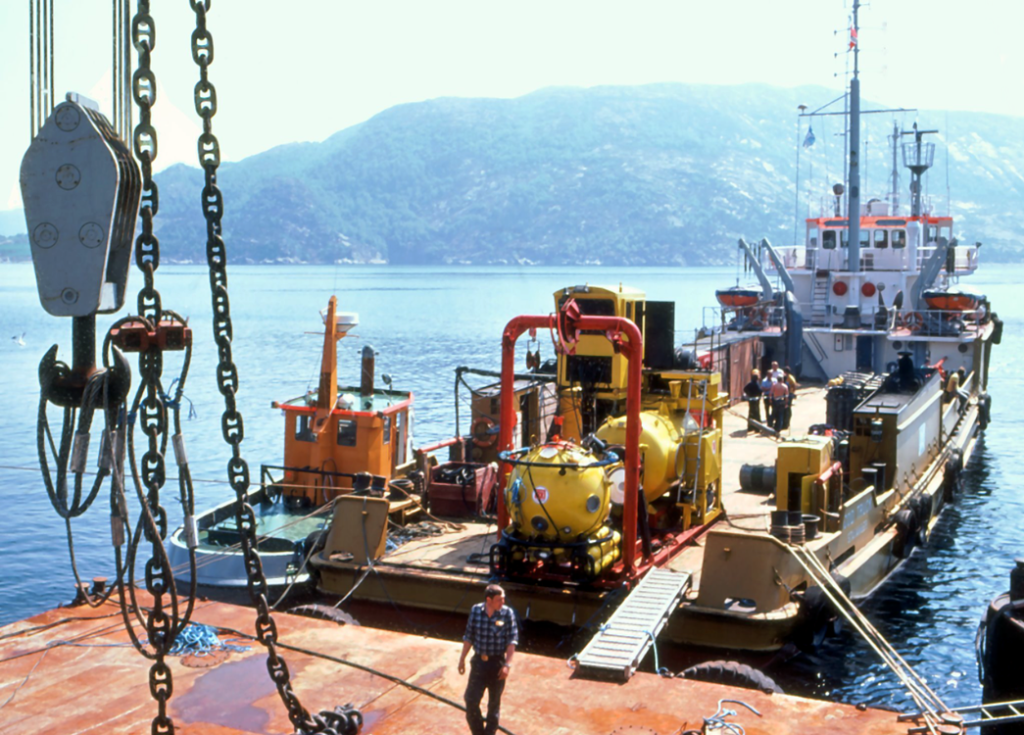

























































































































































24-Man – Saturation System Layout’s



Legend: TUP – Transfer Under Pressure unit / BGS – Breathing Gas System / WR – Washing Room / WS – Workshop / HR – Heating Room / SCR – Saturation Control Room / Lengths in Metres.
A Sat Diving Bell’s Internal and External Checklists
Internal and external aft bell checklists from 2014 for DSV Bibby Polaris (2012), originally DSV Toisa Polaris (1998), renamed DSV Rever Polaris in 2018. Renamed DSV Boka Polaris in 2021. Bibby Offshore was founded in 2003 in Aberdeen and combined with Rever Offshore Subsea Services in 2018. Boskalis purchased Rever offshore in 2021. These comprehensive checklists show the details and complexity of a modern saturation diving bell. My final saturation dive was throughout July 2001 from the Toisa Polaris during the Vesterled PRS tie ins, Mark Nankivell and Graham Legg (RIP) were my dive supervisors.
Aft Bell Internal Check List – 2014 – Click here to view
Aft Bell External Check List – 2014 – Click here to view

(Note the Elementary Simplicity compared to modern-day diving bells)
Truster Hazards – Sat and Air Divers Umbilical Excursion Charts for ex DSV Seabex 1
For larger, legible versions of these images, see the image link buttons below.



NOTE: To view the images above, so they are legible, click the associated Blue button below, the image will open in a new window, click the image again to open it to a full-screen view. To return to this page, close the new window.
Here depicted is the amount of Various equipment needed that a three-person diving bell would contain internally in 1994, leaving very little room to move about.
The diver on the left is Keith Griffiths, the diver on the right is Mick Stagg and the man in the middle was an NDT coordinator, not a diver. (Picture taken on board the DSV Uncle John)
- Two KB gas reclaim hats + the bellman’s KMB.
- Two Bail-out bottles.
- First aid kit and other emergency equipment.
- Three rebreathers.
- Fins, gloves, boots, weight belts.
- It doesn’t show the space taken up by the bell heater and the CO2 scrubber, permanently fixed internally to the hull.
- Three 70m long umbilicals.
Ocean Systems International (OSI) Mark VI 300 feet bounce dive decompression tables.
A telling antidote Leif Tore Skjerven found amusing arose during a speech he held in 2021 to an auditorium packed with professional commercial divers. While elaborating the hardships bounce tables incurred, he was met with complete disbelief and suspected of exaggerating by some men present, this even when avoiding the worst parts of the earliest North Sea bounce diving history.
Note: With a bottom time of just 45 minutes, the total decompression time is 437 minutes.
Breathing a gas mixture of 10% Oxygen, 10% Nitrogen, and 80% Helium at depth and during decompression up to 150 feet and then breathing air (21% Oxygen / 78% Nitrogen) from 150 feet to 40 feet depth and finally breathing pure Oxygen from 40 feet depth until surface pressure is reached. (The initial decompression rate of accent from working depth is 60 feet per minute).


Following the Inception and Infancy of Seaway Diving AS, the company evolved into Stolt Nielsen Seaways AS, Seaway UK, Stolt Comex Seaway SA, Stolt EPTM SA, Stolt Offshore SA, and Acergy SA. This resulted from a series of mergers and takeovers that cumulated into Subsea 7 SA in 2011.
We have to go back in time to 1973 to reach the humble beginnings of the diving/subsea intervention company. Seaway Diving AS was founded by the Norwegians; Jacob Stolt-Nielsen (Jacob Stolt-Nielsen AS), Odd Berg (Bergship AS) and Jon Berg (Nordive AS). The company was established to provide diving services for offshore exploration and offshore petroleum production in the North Sea Basin. Shortly thereafter, Odd Berg and Jon Berg pulled out of the company that was then renamed Stolt Nielsen Seaway AS that same year.
Stolt-Nielsen Seaway originated to provide diving services for offshore exploration in the North Sea. The company would, over the years, go from strength to strength, expanding immensely between 1973 and 1991, with only a few setbacks during oil price drops and legal actions. It would change its name several times, complete multiple acquisitions, be listed on the OSE (Oslo Stock Exchange) and NYSE (New York Stock exchange), buy out some competitors, including Comex SA, and see others fail. In 2005 Jakob Stolt Nielsen divested his shares of the company. Moreover, in 2011, Acergy SA (Earlier Stolt) acquired/amalgamated with Subsea 7 Inc, with a similar history of numerous acquisitions. Combined, the companies became Subsea 7 SA, a world leader in diving, subsea intervention and renewables.
Stolt Nielsen Seaway / Stolt Comex Seaway / Stolt Offshore – Offshore Vessel Fleet 1973-2001.
- M/S “African Queen” (ex-“MM 260“, ex-“Rørfjell“, ex-“Fjellør“). Delivered to Stolt-Nielsen October 1973, Built 1943, Small Car Ferry / Diving station, Floundered 1979.
- M/S “Seaway Cambrium“. Delivered to Stolt-Nielsen April 1975, Built 1974/75 in Pattje, Holland, 965 DWT, 3,080 BHP, 12 knots, Anchor-handler Supply, Divested December 1977.
- M/S “Seaway Silur“. Delivered to Stolt-Nielsen April 1975, Built 1974/75 in Pattje, Holland, 925 DWT, 3,080 BHP, 12 knots, Anchor-handler Supply, Divested July 1977, renamed PSV “Princess Supplier“.
- M/S “Seaway Devon” – M/S DSV “Seaway Hawk“- no I. Delivered to Stolt-Nielsen June 1975, Built 1974/75 at Aukra Bruk, More & Romsdalen, Norway, 975 DWT, 8,000 BHP, Anchor-handler. Re-built May 1976 to Diving Vessel – and renamed DSV “Seaway Hawk“, Divested 1982.
- M/S DSV “Seaway Falcon” – no I. Delivered to Stolt-Nielsen June 1975, Built 1974/75 at Martin Jansen Shiffswerft, Germany, 1572 GT, 4,200 BHP, 14 knots, Diving Vessel, Divested January 1987, renamed DSV “Lowland Cavalier“. (This was the first Stolt Neilsen ship with firefighting capabilities, Dynamic positioning and a saturation diving system).
- M/S “Seaway Trias” – Anchor-handler Supply – M/S DSV “Seaway Eagle” – no I. Delivered to Stolt-Nielsen September 1975, Built at Kaarbø Mek. Verksted, Harstad, Norway, 1,020 GT, 4,200 BHP, 14 knots, Re-built May 1976 to Diving Vessel – Renamed DSV “Seaway Eagle” – no I, Divested July 1984, renamed DSV “Anfitrite“, “DP Eagle“, “Gulmar Eagle“, “The Odessy“.
- M/S “Seaway Perm” (Sister vessel to “Seaway “Devon“). Delivered to Stolt-Nielsen November 1975, Built at Aukra Bruk, More & Romsdalen, Norway, 975 DWT, 8,000 BHP, Anchor-handler, Divested 1979, Renamed PSV “Nan Hai 205“.
- M/S “Seaway Jura” (Sister vessel to “Seaway “Trias“). Delivered to Stolt-Nielsen April 1976, Built 1975, 548 GT, 4,200 BHP, 15 knots, Anchor-handler Supply, Divested January 1987, Renamed PSV “Safe Truck“.
- M/S “Seaway Sandpiper” (ex-“Tempel Hall“). Delivered to Stolt-Nielsen January 1978, Built 1971, 22,249 DWT, 12,000 BHP, 14.3 knots, specialised – Ship for rock dumping underwater subsea Installations, Divested September 1990.
- MSV “Seaway Swan“. Built-in Finland, Delivered to Stolt-Nielsen May 1978, 8,302 GT, 14,800 BHP, Aker H3 rig type, Diving – Construction Submersible Rig, Divested October 1981, Renamed MODU “Treasure Swan“.
- M/S “Seaway Petrel“- no I (ex-“Wilh. Michaelsen“, ex-“M 1304“, Ex-“V 1317“, ex-“V 2005“, ex-“Vimi“). Delivered to Stolt-Nielsen December 1981, Built 1936, 499 GT, 1,050 BHP, 13 knots, Stand-by / Service ship. Divested March 1985, Renamed “North-Sea Surveyor“. (A further vessel was built in 2003, It was also named M/S “Seaway Pretrell-no II“, Divested in November 2016).
- M/S DSV “Seaway Condor“. Delivered to Stolt-Nielsen May 1982, Built 1981/82 in Germany, 4513 GT, 10,516 BHK, 12 knots. Diving Vessel, Lengthened by 22m in 2002, DWT 4,550, 14,117 BHK, Divested March 2018.
- M/S “Seaway Labrador“. Delivered to Stolt-Nielsen March 1983, Built 1982/83, 3060 DWT, 6961 BHP, 12 knots. Supply Ship, Divested January 1991, Renamed “Simon Labrador“.
- M/S DSV “Seaway Harrier“. Delivered to Stolt-Nielsen Januar 1985, Built 1984 in Sandefjord, Norway, 4,782 GT, 13,200 BHP, 12.5 knots, Diving Vessel / Light Construction, Divested February 2013. Renamed DSV “Altus Optimus“.
- M/S DSV “Seaway Pelican“. Delivered to Stolt-Nielsen December 1985, Built 1985 in Sandefjord, Norway, 4,479 GT, 16,320 BHP, 14 Knots, Diving Vessel / Light Construction, Divested and scrapped in May 2020.
- M/S DSV “Seaway Osprey” (ex-“Seacom“, ex-“Nordskald“). Delivered to Stolt-Nielsen May 1990, Built 1984, 5,904 GT, 10,500 BHP, 12 knots, Diving Vessel / Light Construction, Divested September 2018.
The Stolt Comex Seaway fleet expanded further between 1992-2001, with acquisitions of other subsea intervention companies, including their assets and propagated an ever-expanding global reach.
- M/S “Seaway Falcon” – no II (ex-“Enterprise“, ex-“Petrel“, ex-“Oil Driller“, ex-“Petrel“). Delivered to Stolt-Nielsen April 1995, Built 1975/76, 10,385 GT, 21,534 BHP, 12.5 knots, Light Construction, Cable, Umbilical, Flexible and Rigid Pipelayer, Divested October 2011, Renamed “GSP Falcon“, Scrapped May 2017.
- M/S DSV “Seaway Eagle” – no II, (ex-“Navigator“). Delivered to Stolt-Nielsen April 1997, Built 1984 at Vlissingen, Holland, 9,556 GT, 13,214 BHP (Diesel Electric), 13 knots, Dive / Light Construction / Umbilical and Flexible Laying, Divested 2020/2021.
- M/S DSV “Discovery“(ex-“Discovery“). Bare-boat Charter to Stolt-Nielsen 1997, Built 1989, 8,248 GT, 14,550 BHP (Diesel Electric), Dive / Light Construction / Umbilical and Flexible Laying, Released at the end of Charter.
- M/S DSV “Seaway Hawk” – no II, (ex-“Pacific Constructor“). Delivered to Stolt-Nielsen June 1997, Built 1978, 3,860 GT, 4,201 BHP, Crane / Construction Vessel, Divested 2011, Renamed “Armada Hawk“.
- M/S “Seaway Kingfisher” (ex-“Yurit Trifonov“, ex-“Atlantic Surveyor“). Delivered to Stolt-Nielsen March 1998, Built 1989 in Russia, 3,672 GT, 4,350 BHP (Diesel Electric), 14 knots, ROV support / Light Subsea Intervention, Divested May 2004.
- M/S “Seaway Invincible” (ex-“Invincible“, ex-“Seaboard Invincible“, ex-“Hornbeck Invincible“, ex-“Tidewater Invincible“). Delivered to Stolt-Nielsen November 1998, Built 1970, 1,461 GT, 2,160 BHP, ROV support, Divested 2006.
- M/S “Seaway Commander ” (ex-“Swanella“, ex-“Archimedes“, ex-“Drive Performer“, ex-“North-Sea Commander“). Delivered to Stolt-Nielsen November 1990, Built 1967, 1,748 GT, 1,550 BHP, 15 knots, Diving / Light Subsea Intervention, Divested January 2004.
- M/S “Seaway Surveyor” (ex-“Havskjell Viking“, ex-“North Sea Surveyor“). Delivered to Stolt-Nielsen January 1996, Built 1986, 1,716 GT, 9,200 BHP, 11.5 knots. Supply Ship, Divested May 1997.
- LB “200” (ex, “Viking Piper“, ex-“McDermott Lay Barge 200“). Delivered to Stolt-Nielsen January 1998, Built 1975, 40282 GT, Anchor Barge, Rigid Pipe Lay barge, Divested April 2009.
- M/S MPSV “Seaway Legend” (ex-“Laney Chouest“). Delivered to Stolt-Nielsen December 1998, Built 1985, 2,022 GT, Light Subsea Intervention, Divested May 2013.
- HL RPLB “Seaway Polaris” (ex-“DLB Polaris). Delivered to Stolt Neilsen January 2000, Built 1987, 16,455 GT, Anchor Barge – Then converted to DP Barge, Heavy lift – Rigid Pipe Lay Barge, Divested 2015.
- M/S MPSV “Seaway Explorer ” (ex-“Explorer I“, ex-“Northern Explorer“). Delivered to Stolt-Nielsen May 2000, Built 1984, 2,987 GT, Light Subsea Intervention, Divested 2006, Renamed “Hai Yang Shi Yo 299“.
- M/S RPLV “Seaway Kestrel” (ex-“Northern Installer“, ex-“Hiryu“, ex-“Chiryu“, ex- “Norlift“). Delivered to Stolt-Nielsen June 2000, Built 1978, 4,604 GT, Reel lay / Subsea Intervention, Divested 2006, Renamed “Kestrel“.
- RPLB “Seaway Orion” (ex-“EPTM 101“, ex-“CBL 101“). Delivered to Stolt-Neilsen January 2001, Built 1977, 4134 GT, Anchor Barge, Shallow Water Lay Barge, Divested 2015.
- DSV “Seaway Defender“ (ex-“Sea Topaz“ (1976-1979), ex-“Northern Defender“ (1977-1980), ex-“Maersk Defender“ (1980-1991), ex-“OSA Defender“ (1991-1997), ex-“American Defender“ (1997-2001). Delivered to Stolt-Neilsen in 2001, Built in 1975/76, 1828GT, Supply Vessel, converted to DSV, Light subsea intervention/construction, Divested in 2006 & renamed “Epic Diver“ (2006-2011).
Stolt Comex Seaway was renamed Stolt Offshore in 2000. The Stolt-Nielsen family divested their shares in the company in 2005, and the company would be renamed and rebranded as Acergy SA in 2006.
The inception and Infancy of Subsea 7 Inc resulted from a series of mergers between Norwegian DSND Offshore AS, Halliburton Subsea, Subsea Offshore and Rockwater over an extended period. DSND, in parallel, would acquire Hay Ships in 1999 and Halliburton’s subsea division in 2002 and be renamed Subsea7 Inc. The conglomerate resulted from a series of mergers between DSND Offshore AS, Halliburton Subsea, Subsea Offshore and Rockwater, with Rockwater and Subsea merging in 1999 to form Halliburton Subsea. Subsea 7 Inc was incorporated in January 2002 under the name DSND Inc. The resulting company operated from May 2002 as a fifty-fifty joint venture with DSND, named Subsea 7 Houlding Inc and renamed Siem Offshore Inc in 2004. (It was further renamed from Siem Offshore Inc to Subsea 7 Inc in 2005.)
The conglomerate had an extensive fleet of up to twenty vessels, including numerous ships and barges earlier acquired from other companies. Halliburton exited the joint venture in November 2004.
DSND Acquired Haliburton’s fifty per cent shares in Subsea7 Inc and floated Subsea7 Inc on the Oslo Stock Exchange, Norway, in August 2005 following its restructuring the same year. Moreover, in 2011, Subsea7 Inc was acquired by/amalgamated with Acergy S.A (Earlier Stolt) with a similar history of numerous acquisitions. Combined, the companies became Subsea7 SA, a world leader in diving, subsea intervention and renewables.
Subsea 7 traces its roots back to Det Søndenfjelds-Norske Dampskipselskap AS’ DSND’ established in 1854. The company’s main operation until 1964 was shipping, focusing on passenger transportation. In 1964, the company’s passenger liner service between Hamburg and Oslo was closed down, and the company’s activity level was then limited until 1985. DSND operated as an investment company between 1985 and 1995, with investments mostly in offshore-related activities. By 1995, the company had acquired six unique offshore vessels. DSND conducted eight acquisitions of assets or businesses between 1995 and 2002.
Numerous pioneering diving and Subsea Intervention/Construction companies form the foundations of Subsea7 SA. Amongst them are; Taylor Diving & Salvage, Subsea International Inc, Haliburton Subsea, Stolt Nielsen Seaway, Brown & Root, Comex Houlder Diving, SMIT, Strongwork Diving, Xodus, Siem Offshore Contractors, Kestrel Subsea Systems Limited, DSND, 4Subsea, Acergy, Seaway Diving, Petrology, i-Tech7, Sub Sea Offshore, 2W, Subsea Offshore, Comex, 3X, Subsea Dolphin, Ceanic, J Ray McDermott diving division, ETPM, EMAS Chiyoda Subsea, Paragon Engineering and Seaway Heavy Lifting.
In 2025, Subsea7 merged with Saipem to form Saipem7, with 45,000 employees and four subdivisions. The Offshore Engineering & Construction business was incorporated in an operationally autonomous company branded “Subsea7 – a Saipem7 Company” – A TRUE GLOBAL GIANT.
Norway’s first Saturation diving course was held in Tromsø in October 1973. The initiative for the course came from Arne Friis, who worked at Stolt Nielsen’s Shipping Company. He became the first manager of Seaway Diving AS. The saturation diving course was arranged aboard M/S Fjellør (renamed African Queen 1974), which was then still owned by Nordive (Jon Berg).
The course went over four weeks with dives to seventy-five metres. Arne-Johan Arntzen, Håkon Bergo, Kåre Brakstad, Arnt Danielsen, Tor Eriksen, Hans Jacob Faye, Bjørn W. Kahrs, Arne Mjelde, Rune Pettersen, Torgrim Rustad, Stein Rygland, Svein Tennebekk were the first to complete the course. Audun Ellingsen, Ivar Engeberg and Erik Gulbrandsen did not finish the course.
Depictions: 1) African Queen 1976 at Tollbodkaien in Bergen. The yellow container on the bow is the air diving station. 2) Diving bell and the chamber 1973. 3) The Seven Borealis 2021 (These three images say more than a thousand words regarding the company’s immense growth since 1973).



The Ships & Platforms


Mid-September 1972 – 3X Divers blew up the wellhead at one hundred and six metres depth for Norske Shell in the North Sea. The divers used Yokohama gas helmets and an OSI diving bell. Diving from seal hunter M/S “Brandal (M-7-HD)”, built in 1910, likely the smallest mothership historically ever used for bell diving deeper than one hundred metres.












































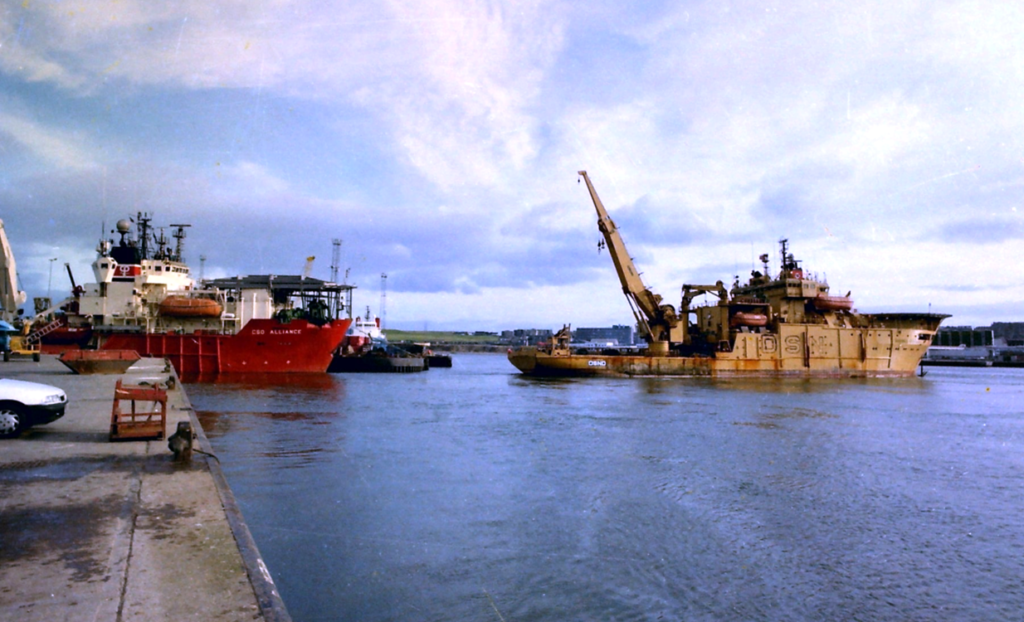





















































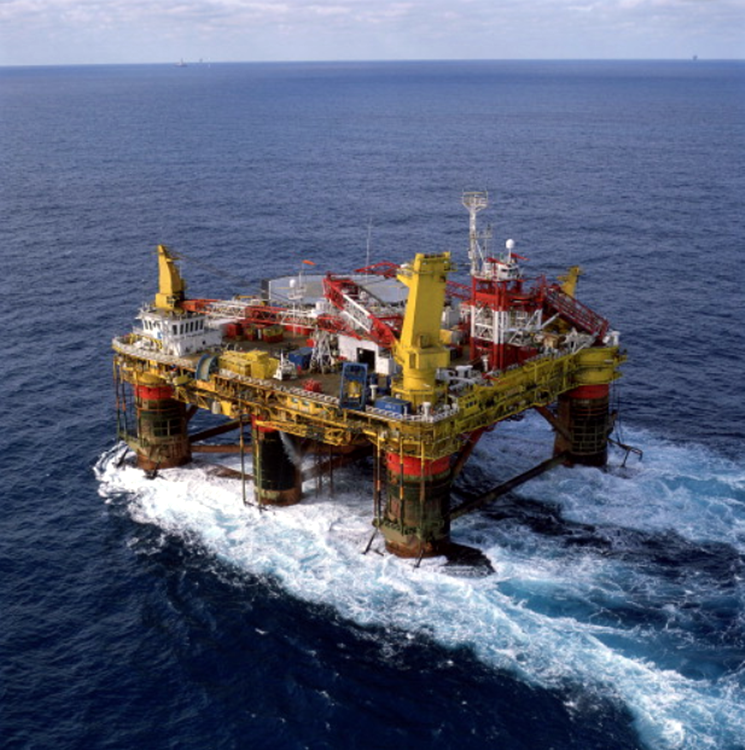











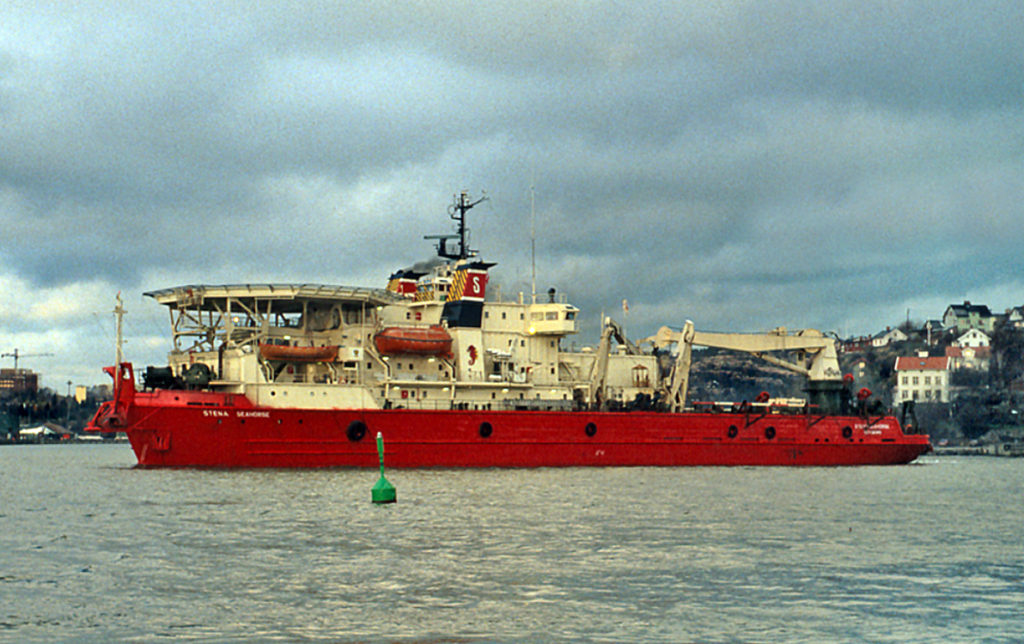



















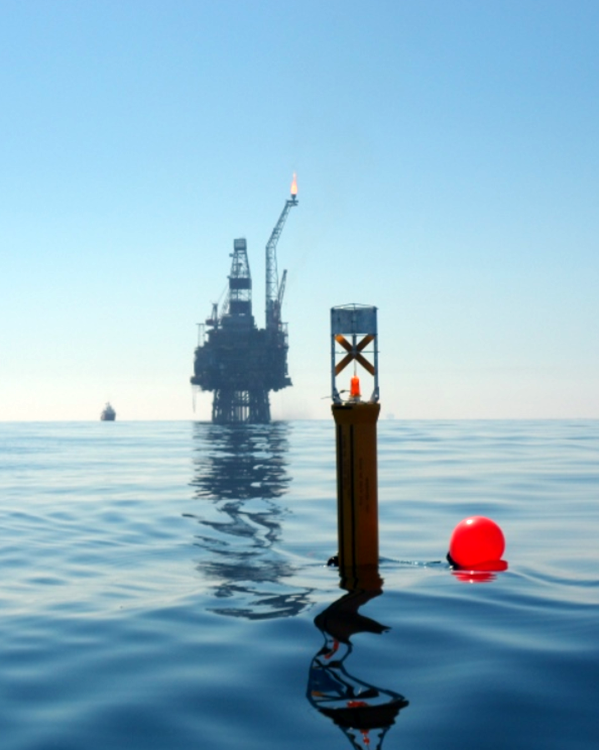
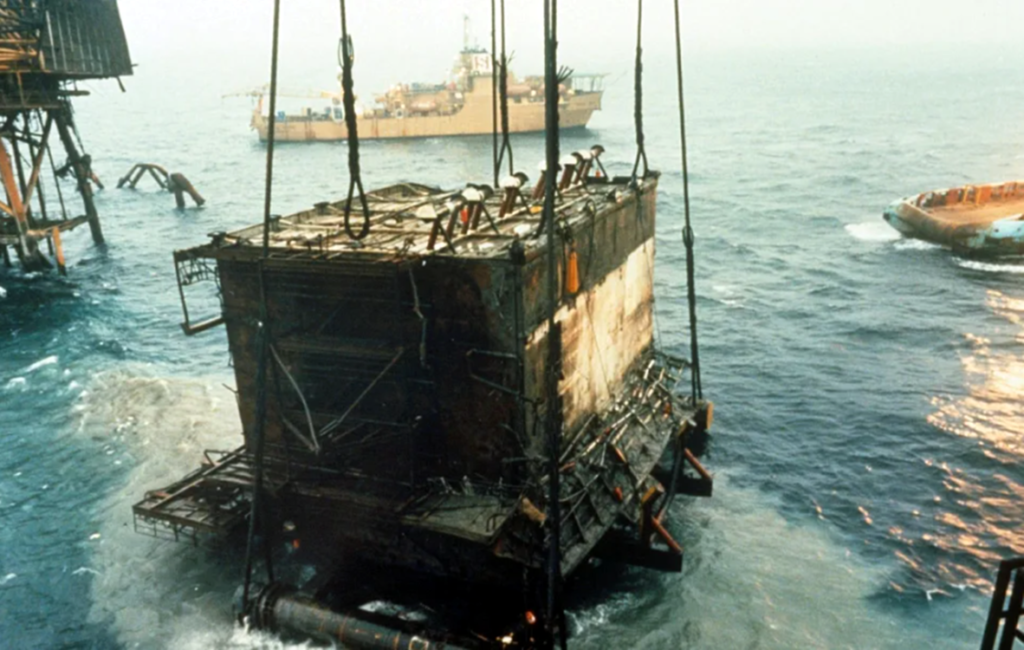
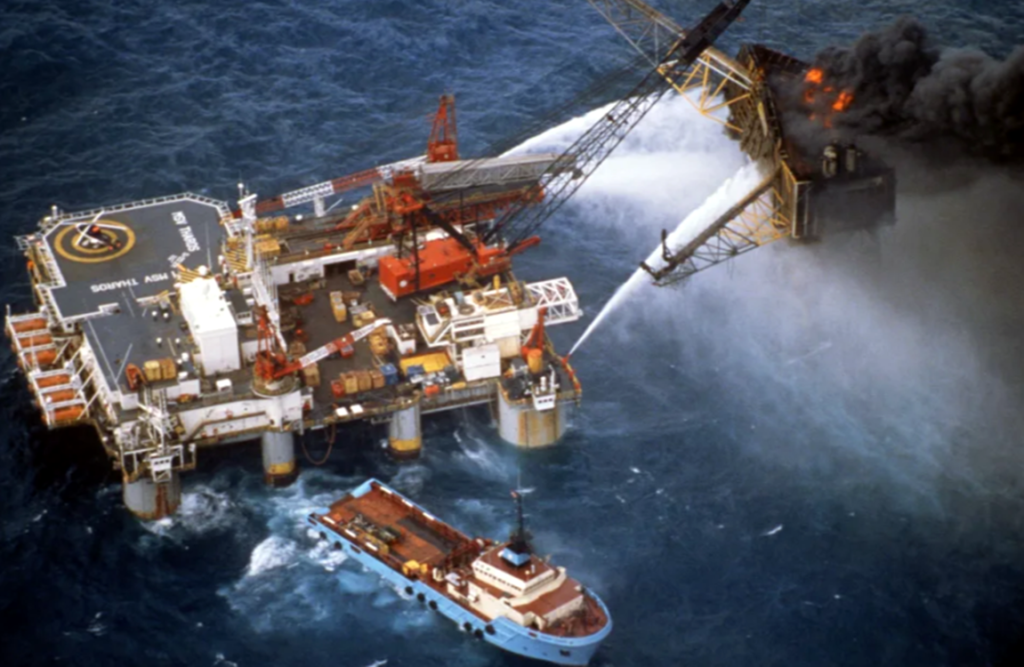
































To add perspective to this image of the first third-generation pipe laying barge, LB Viking Piper 1975-1981, later renamed Mcdermott Lay Barge 1981-1998, LB 200 1998-2006, Acergy Piper 2006-2009 and Castoro 7 2009-2016. She measured one hundred and sixty-eight metres in length, fifty-nine metres in width, and thirty-three metres in height.

Al Baz – Salvage Method Nigeria 1992








The Men


Jim MacFarlane, ex-Royal Navy, North Sea Bounce and Saturation diver through the North Sea pioneering diving years, penned “The Law Of The Diver” His eloquent lines delineated decades ago are an honest and factual view of those most challenging and dangerous of times.
The Law of the Diver.






























































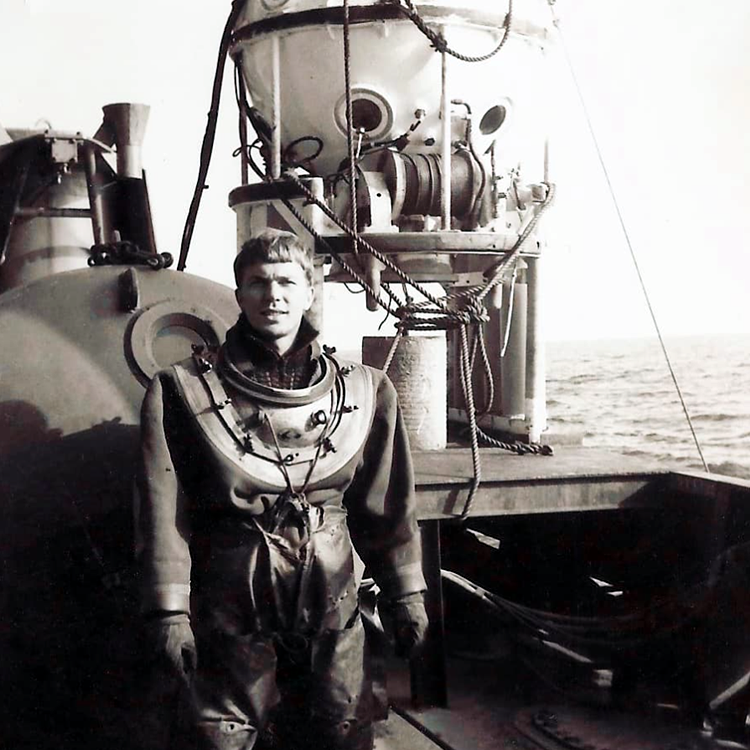












































































Buldra Sat Dive Barge, Saturation Dive Course 1980, NUI, Gravdal, Bergen, Norway.
The diving system on Buldra was a 3X system purchased from DRASS (Italy).
Names of the divers depicted: A. Boga, B. Weydal, B. W. F. Lien, B. O. Carlsen, B. G. Algrim, B. Gjerde, K. N. Mønstre, L. M. Rasch, O. M. V. Krog, O. A. Reksten, P. H. Hjemgård, P. O. Jernes, Per. B. G. Hartvik, R. Fauskanger, R.. Buer, R. Brekken, S. A. Barka, S. O. Klausen, T. Borgen, T. Wiik, T. Tytlandsvik, Ø. Berge, and Ø Lie. The lady depicted is from the Norwegian Petroleum directory.
SEAWAY DIVING & STOLT-NIELSEN SEAWAY – UNDERWATER HYPERBARIC HABITAT WELDING PROGRAM – 1976 to 1986 – Photos Prepared by Dave Gibson, May 2022.













NUTEC (NUI) Test & Research Dives
Military Divers Medical Criteria

















OTS III – 360 metres Depth (Oseberg with wet dive) – Six Divers – Duration 27 days – 06 November through 02 December 1986
You are mistaken if you believe an experimental deep Saturation test dive is a walk in the park!

















“Incidents where evacuation and/or emergency decompression have or could have been initiated”
Report prepared by NUI/NUTEC
A summary of known cases – Click here to read
A summary of known cases where divers have been evacuated or transferred to HRU (also where HRU was not launched), or events where the emergency decompression could have been applicable (e.g. fire on board the vessel) is shown in the table over the two following two pages. The data is mainly retrieved from a spreadsheet that has been compiled by Tim Chesshire and made available by an email from ADAS November 2019 (TC/ADAS2019), but also sources that include books, magazines, internet, reports, and personal communication (Leif-Tore Skjerven etc.) as indicated. Incidents marked L(2018) indicates that information about the incident was retrieved from www.longstreath.com in 2018, but that it has not been possible to find it again.
It should be noted that not all information is equally accurate. Different sources, in some cases, give different information, and evaluations have been necessary. Italic types are used to indicate especially great doubt about the correctness of the actual information. That information is omitted (“open box”) does not necessarily mean that the information is unavailable. This is somewhat random as the main purpose was all the time to identify the highest number of incidents with a reasonable degree of confidence.
Colour coding: Is used for easier oversight. Green indicate that a transfer to HRU took place. Yellow means no transfer took place, light brown means that a bell-to-bell transfer was carried out or attempted, light blue means that vessel/chamber sunk at sea, and white means that information on transfer, if any, is lacking. A special colour code is used in the column “incident type”. The content of the different columns is as follows.
ID: This is a unique identification of the incident given by the (estimated) year (2-3 digits) and one serial number (2 digits after the comma).
“Validity factor”: The numbers in this column represent a subjective attempt to weigh the probability for / the correctness of that the incident really happened. The incidents listed as ID 73.01 and ID 74.01 are, e.g. both given the validity factor 0.5 to indicate that these quite certainly describes the same incident, but with the information available, it is not possible to decide which is most correct.
Start of incident: The date and year when the incident started is shown if it is known.
Transfer type: This should be self-explanatory and is determining the colour as explained above.
Indication of country or ocean: This is based on geographic position and not where the involved personnel or vessel came from. Mostly two-letter (ISO 3166-1 alpha-2) country code is used. Exceptions are GOM which is “Gulf of Mexico”, and XX, indicating position is unknown.
N.o. Divers: The assumed number of involved divers is shown if it is known.
HRC hyperbaric rescue or emergency/evacuation chamber.
HLB hyperbaric lifeboat (include SPHL).
HRV hyperbaric rescue vessel (Hyperbaric Lifeboat).
SPHL self-propelled hyperbaric lifeboat.
HRU hyperbaric rescue unit (covers HLB, HRC, HRV and SPHL).
The two following images are PDF documents; use the + and – buttons at the top of each page to zoom in or out to make it more legible.
Historical-Emergency-Decompression-Situations-Page-2-of-3 Historical-Emergency-Decompression-Situations-Page-3-of-3Inshore Diving Gallery





































Saturation Diving Animation
Offshore Diving Gallery




















































Below is a list of the various dive vessels that I have dived from between 1987 and 2001.
M/S Sarpen. 1987-1988. (Norwegian Naval) (Air/SDO2/Re-breathers/Nitrox/Scuba) (Inshore).
M/S Draug. 1988. (Norwegian Naval) (Air/SDO2/Re-breathers/Nitrox/Scuba) (Inshore).
M/S Norlindo. 1990-1991. (Air/Scuba & Surface Supplied/SDO2) (Inshore).
Dive Barge Buldra. 1990-1994. (Heliox/Trimix Sat/Air/Scuba & Surface Supplied/SDO2) (Inshore).
Naval Reserve Vessels. 1991. (Air/Re-breathers/Nitrox/Scuba) (Inshore).
M/S Scuba. 1991-1993. (Air/Scuba & Surface Supplied/ODCC) (Inshore).
M/S Scuba Junior. 1991-1993. (Air/Scuba & Surface Supplied/ODCC) (Inshore).
DSV Seaway Harrier. 1991-1992. (Heliox/Trimix Sat/Air surface supplied/SDO2) (Offshore).
DSV Seaway Condor. 1992. (Heliox/Trimix Sat/Air surface supplied/ODCC) (Offshore).
M/S Mikal I. 1992. (Air/Scuba & Surface Supplied/Nitrox/ODCC) (Inshore).
DSV Seaway Pelican. 1993-1999. (Heliox/Trimix Sat/Habitat/Air surface supplied/ODCC) (Offshore).
MSV Amethyst. 1994-1995 (Heliox/Trimix Sat/Habitat/Air surface supplied/ODCC) (Offshore).
DSV Seaway Osprey. 1994. (Heliox/Trimix Sat/Air surface supplied/ODCC) (Offshore).
AHTS Normand Mjolne & Jakob I. 1996-1997. (Air diving) (Offshore).
M/S Fusa. 1997 (Air/Scuba & Surface Supplied/ODCC) (Inshore).
M/F Flekkeroy. 1997-1998 (Air/Scuba & Surface Supplied/ODCC) (Inshore).
MSV Regalia. 1999 (Heliox/Trimix Sat/Air surface supplied/ODCC) (Offshore).
DSV FPLV Seaway Eagle. 2000 (Heliox/Trimix Sat) (Offshore).
DSV Toisa Polaris. 2001 (Heliox/Trimix Sat/Habitat) (Offshore)








